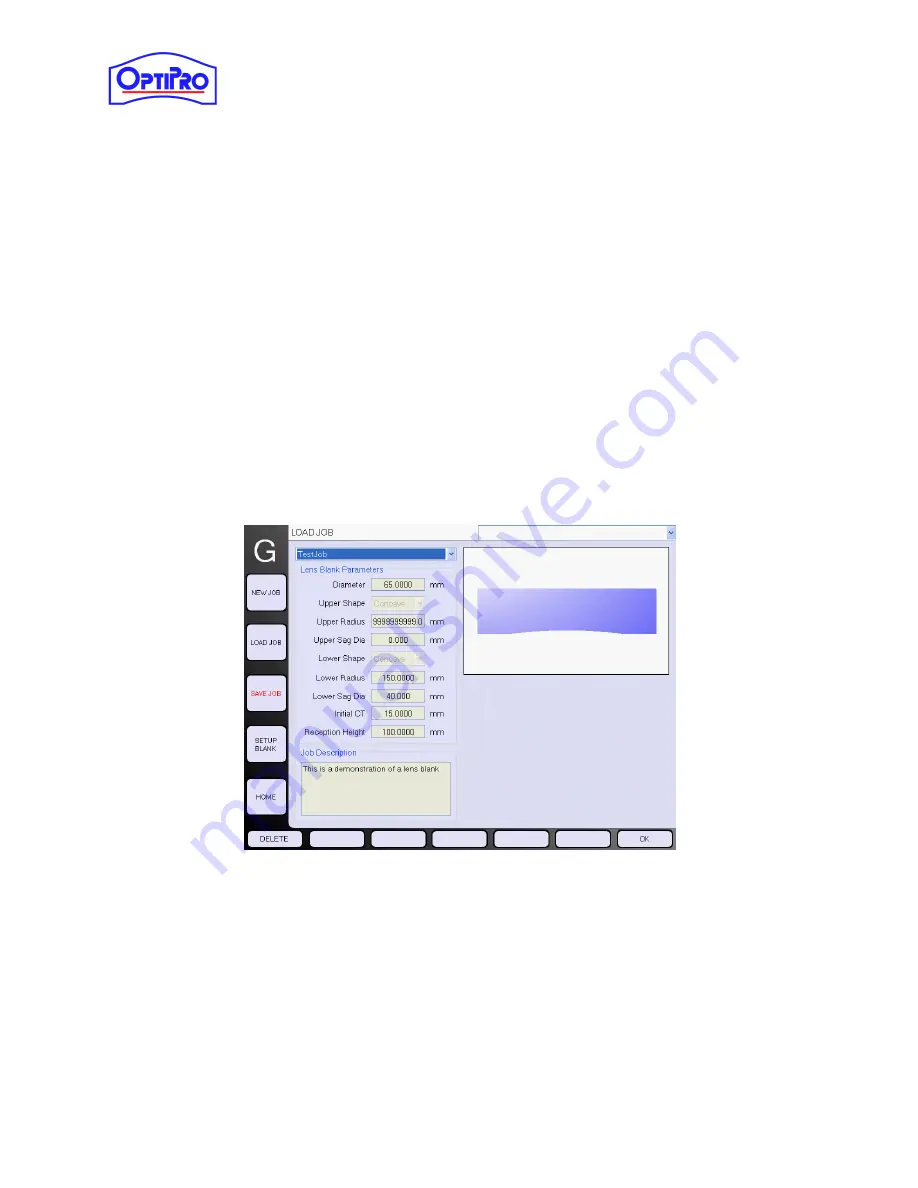
User Manual – eSX
OptiPro Systems, LLC.
Page 45 of 111
Last Modified: 8/27/2014
7.6
Creating and Running Jobs
The G-Series Lens Generating Software allows the operator to generate convex and concave spherical
and aspheric surfaces, perform beveling and edging routines, and machine vacuum fixtures, by utilizing a
Job file structure. A Job file will store parameters for all the processes required to manufacture a lens
surface. Each process is defined by a series of inputs and parameters including lens geometry, tool
parameters, processing parameters, and corrections.
7.6.1
Loading an Existing Job
After the machine is referenced and the correct tools are loaded into the machine, a previously saved
job can be loaded.
1.
Tap the [Load Job] button from any screen.
2.
Select a job from the dropdown menu. For the job highlighted, the Lens Blank Parameter fields
will be populated with the data that was last saved in that job file. The previously input Job
Description will also appear, along with a graphic illustrating the lens blank defined when the job
was last saved.
Figure 7-13: LOAD JOB screen
3.
Tap [OK] to load the selected job. The job can now be modified if needed to update the last
saved parameters (i.e. tool, blank, or process parameters). Modifying an existing job follows a
similar procedure and uses the same software screens as creating a new job; see Section 7.6.3
for details related to modifying an existing job and Section 7.6.4 to run a job.
After loading an existing job it is advised to re-probe tool lengths and part reception height before
processing. Once they have been setup and checked by a qualified operator, the job is ready to run.






























